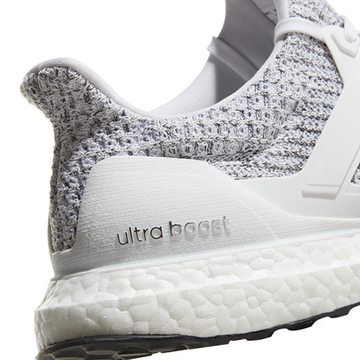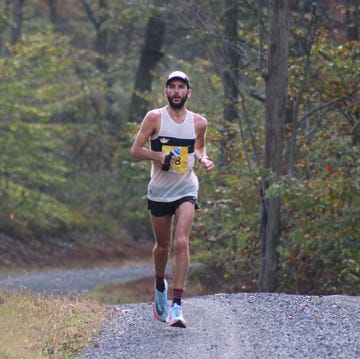Erin Menefee’s doctors have a nickname for her: Supergirl. Similar to the comic book hero, the 26-year-old physical therapist has faced obstacles head-on with tenacity. But in her case, her superhuman strength comes in the form of running marathons less than two years after open-heart surgery.
Menefee first noticed something wrong in December of 2015, when she took off on a long run during a break in her day at San Diego State University, where she was studying to become a physical therapist. At the time, the former collegiate runner for the University of Arizona was training for a transition to the marathon distance.
Twelve miles into her 15-miler, Menefee’s heart starting beating at an alarmingly fast pace. Pain shot down her left arm.
As a former collegiate runner for the University of Arizona, Menefee was well-acquainted with the shortness of breath caused by hard runs. But this was different. No matter how badly her body wanted to take in oxygen, she still could not breathe. She had to stop, and started taking deep breaths, but it didn’t really help.
“I thought I was having a heart attack,” Menefee told Runner’s World.
Races - Places.
Still breathing heavily, Menefee was able to get herself back to the house and immediately went to the emergency room. The doctors didn’t find anything out of the ordinary, but they still referred her to a cardiologist.
Getting a diagnosis
For months, Sinjin Lee, M.D., of Kaiser Permanente Medical Center, worked diligently, running tests to find the source of the problem. In March 2016, he finally discovered that she had a rare congenital heart defect called partial anomalous pulmonary venous return, a condition where the veins that are supposed to carry blood to the heart’s upper left chamber instead carry it to the heart’s upper right chamber—or to other blood vessels. This allows poorly-oxygenated blood to mix with the oxygen-rich blood.
With a significant amount of blood re-circulating throughout her heart, Menefee was only getting about 60 percent of the oxygen needed from her lungs to her body.
“I was pretty lucky that my cardiologist really advocated for more testing and knew something was off, and just kept diving deeper,” she said.
After the initial diagnosis, her doctors decided that she didn’t need to have open-heart surgery at that time. Because she was a functional, young runner competing at a high level with a heart that didn’t appear to have an alarming amount of damage, they decided to forgo the surgery option for periodic check-ups on the size of her heart.
“To me, that was the hardest thing to hear. I had wrapped my head around ‘Okay, I’m just going to get through this. My heart will be fixed, and everything will be fine,’” she said. “But it turned into a waiting game—every year of my life, having another test, and just waiting for the time where my heart is enlarged enough to have surgery on it.”
The defect had the potential to run her heart to complete exhaustion. But there was no way of knowing when—and if—her heart would reach its limit.
She didn’t have to wait long. Standing up from a chair, she would get lightheaded, and the tips of her fingers began to turn blue from the lack of oxygen traveling to the rest of her body.
Eight months after the diagnosis, she went in for more testing. She found that her heart had reached the surgical threshold of enlargement.
Undergoing surgery—and starting to run again
Save $54 on the Adidas UltraBoost 4.0 Right Now.
“I don’t know how, but mentally by that point, I had accepted and known that this [surgery] was the best outcome for me,” she said. “I knew I’d want to get back to running, but that wasn’t promised after the surgery. But [in order to live] a healthy life, this had to be done.”
On July 26, 2017, Menefee went in for surgery at Ronald Reagan UCLA Medical Center. The last thing that she remembered was seeing her dad cry when they wheeled her away from him into the operating room.
“I think that made me feel stronger because I was comforting him and letting him know that it was going to be okay,” she said. “[I told him] I’ll see you in a few hours.”
From 8:00 a.m. until 5:30 p.m., she was in the operating room. Doctors had to build a stent and move her vein into its proper place from her heart to her lung. They had to saw open her sternum to do that.
The procedure was successful. For four days, she stayed in the hospital, but was able to stand up the day after the procedure and walk around. For six weeks, she couldn’t lift her arms above her head or carry items heavier than a few pounds. Because of the break to her sternum, any minor impact was painful.
Four weeks after the operation, she started power walking in her neighborhood. Six weeks post-op, she was cleared to do her first run—an 8:49 mile. To Menefee, that mile is one of her most memorable running accomplishments.
[Stay injury free on the road by getting on the mat with We may earn commission from links on this page, but we only recommend products we back.]
“It was the mile I’m most proud of, probably of my entire life, just because I didn’t know if I’d be able to do it again,” she said.
Looking Toward Trials
That mile was also the first step in her return to marathon running and pursuit of the 2020 Olympic Trials—something she had wanted to do since graduation.
When she graduated from Arizona in the spring of 2014, Menefee finished her time as a Wildcat with a race that left her feeling disappointed. Unsatisfied with her last track outcome, Menefee decided to go for a 50-mile run through Tucson in June, one week after her last collegiate race. At that point, the longest run she had ever done was 16 miles.
“I don’t know where that came from, but I had my mind set on it,” she said with a laugh.
With her college career over, she thought it would be the last time she’d ever run.
Her teammates rallied around the idea and took turns biking alongside her while she completed the feat, which took over six hours. When she reached the marathon split, Menefee remembered her time being 10 minutes faster than the mark she would need to qualify for the Boston Marathon. For the remainder of her run, Menefee thought about her potential in the distance.
“By the time I finished, I realized I wanted to be a marathoner. In that moment, I thought ‘I’m going to do this!’” she said. “It [the 50-mile run] was going to be my goodbye to running, but it ended up introducing me to what I wanted to do with running.”
So she began to focus her running around training for that distance. Five months before her surgery (but after her initial diagnosis), Menefee ran her official marathon debut of 2:51:31 at the 2017 L.A. Marathon, six minutes and 31 seconds shy of the standard to compete in the Marathon Trials.
Then, once she was able to start running six weeks after the surgery, she turned her attention to upcoming races. In January of 2018—almost six months after her operation—Menefee ran a half marathon in Carlsbad in 1:34:43.
By October, she won the Long Beach Half Marathon in 1:23:03. Her latest race was the California International Marathon in December. She went into it with the goal of going sub-3:00—and she finished in 2:52:37. (To qualify for the Trials, she will need to run under 2:45:00 in the marathon before January 19, 2020 or faster than 1:13:00 in the half marathon before that date).
Now, about a year and a half since her surgery, Menefee feels healthy and strong. And while she crushed her latest goal—and qualifying still seems in reach—she is thrilled to just be on the starting line.
After all, she was never going to let the ordeal of open-heart surgery change her identity as a runner.
“All my running has been with teams and trying to get the best out of myself and I don’t think I’d get the same joy from just going out for runs here and there. I like pushing myself to the limit,” she said. “Even though these are the cards I was dealt, I just have to respond to it. It’s not going to take away who I am.”
Taylor Dutch is a writer and editor living in Austin, Texas, and a former NCAA track athlete who specializes in fitness, wellness, and endurance sports coverage. Her work has appeared in Runner’s World, SELF, Bicycling, Outside, and Podium Runner.















